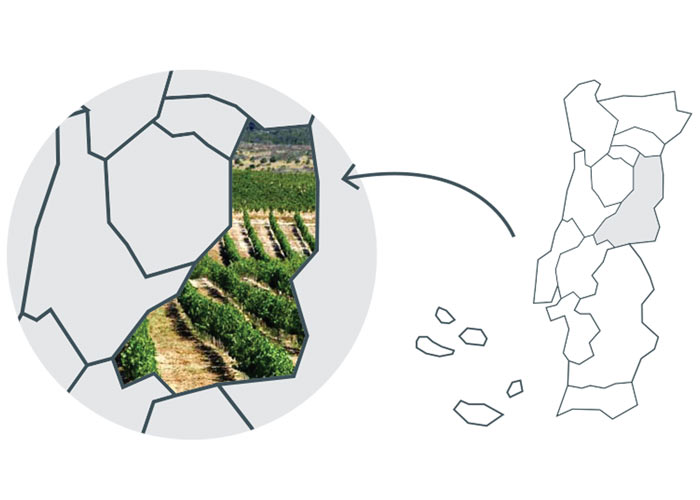Wine regions
Portuguese wine regions
Beira Interior
A bit of history
The region has been producing wine for centuries, back to the time of the Roman Empire. But it was in the XII century, thanks to the Cistercian monks, that wine production really took off. Once again, it is never enough to thank the good monks for their enjoyment of fine drinks – an enjoyment we still cheer today.
What to expect?
These high, granite uplands over by the Spanish border include some of Portugal’s highest and most impressive mountains.
The climate is seriously continental, hot and dry in summer, but with very cold, long winters. In the summer and autumn heat, alcohol levels can shoot up before tannins are fully ripened, but with care and skill, good, balanced wines can be made.
Ripening is easier in the southern sub-region, Cova da Beira, whose exclusive local white grape, Fonte Cal, can make rich, honeyed wines with steely acidity. Other white varieties include Arinto, Malvasia Fina, Rabo de Ovelha and Síria.
The main red varieties are Bastardo, Marufo, Rufete, Tinta Roriz and Touriga Nacional. Many vines are old – a plus for quality, meaning small yields and potentially greater concentration in the grapes.
Reds
Common varieties: Bastardo, Marufo, Rufete, Tinta Roriz and Touriga Nacional.
Whites
Common varieties: Arinto, Fonte Cal, Malvasia Fina, Rabo de Ovelha and Síria.
Adapted from: CVR Beira Interior, Wines of Portugal, Instituto do Vinho e da Vinha.

approx. £19.22
White WineQuinta de Foz de Arouce2022, 75clBeira Interior
White: Full-bodied
12%
approx. £24.80
White WineQuinta do CardoGrand Reserve 2021, 75clDOC Beira Interior
White: Aromatic
12.5%

